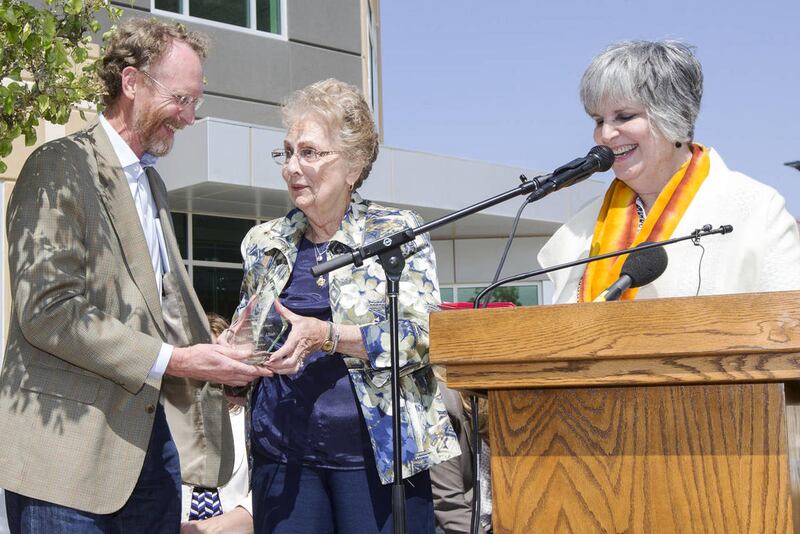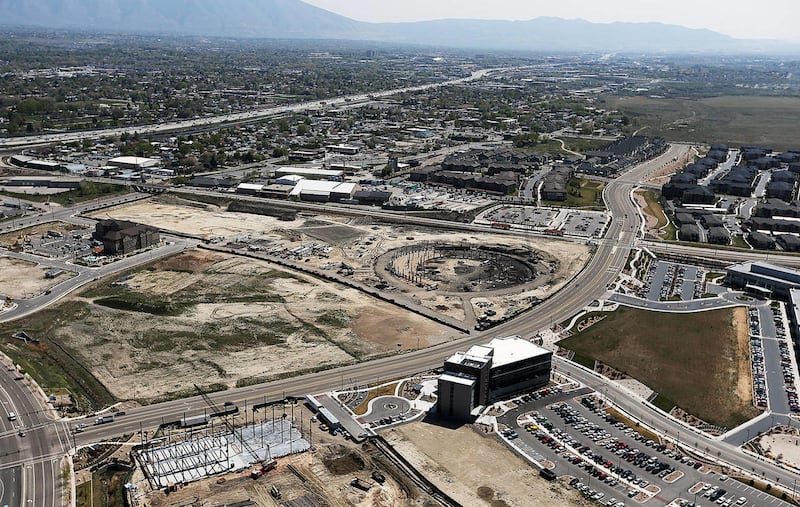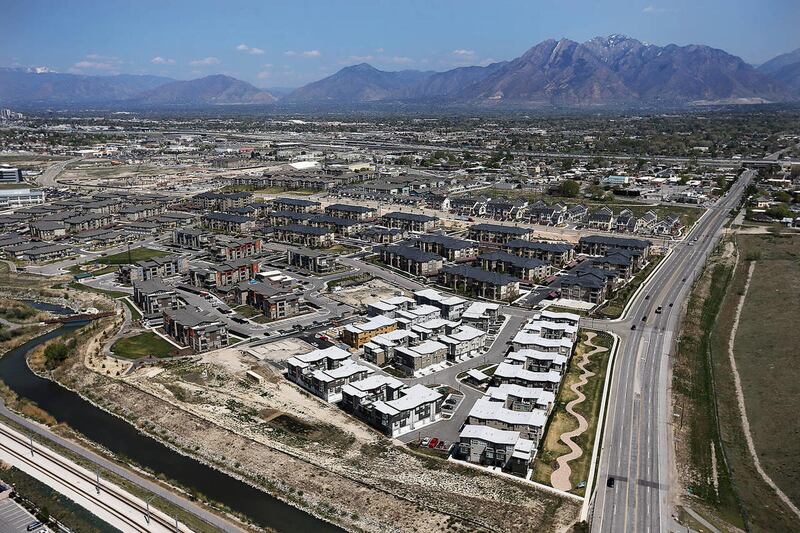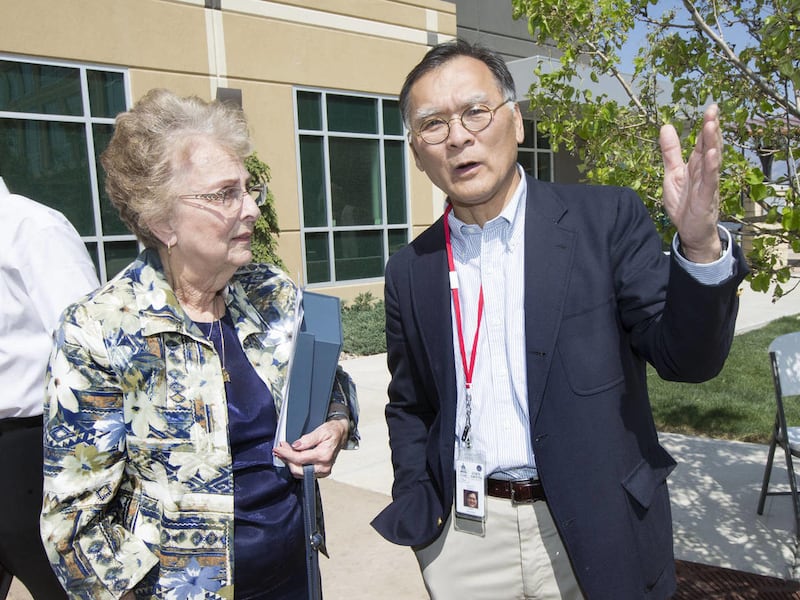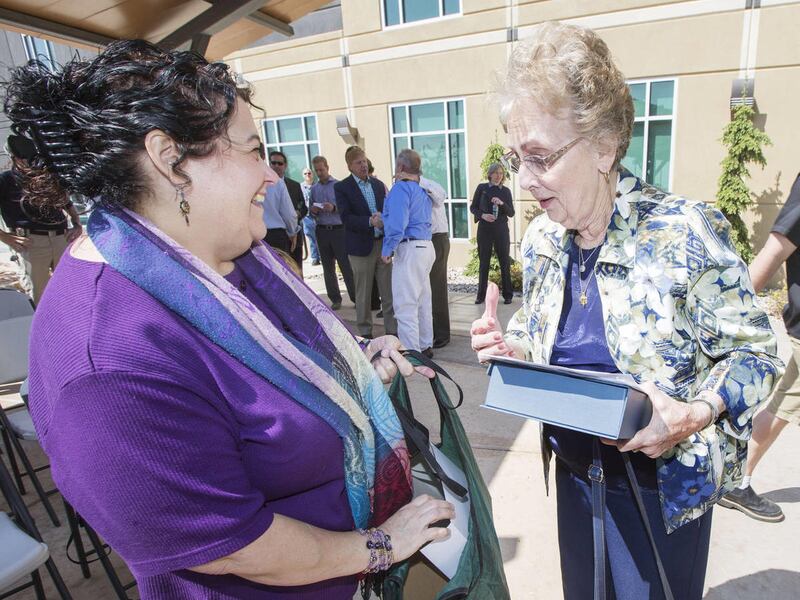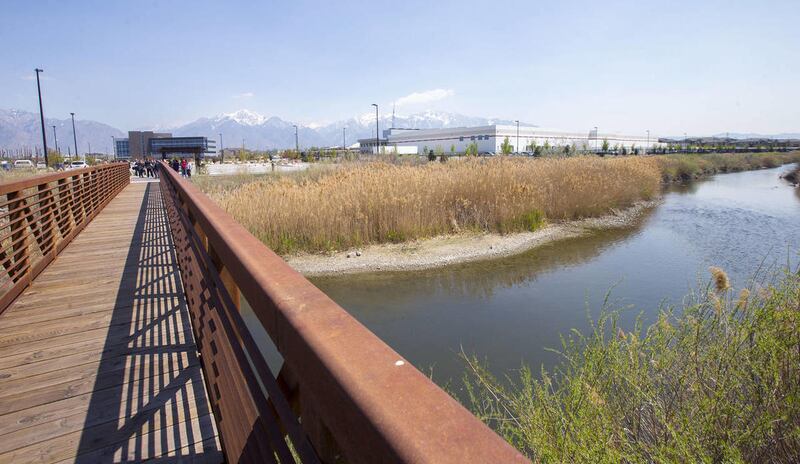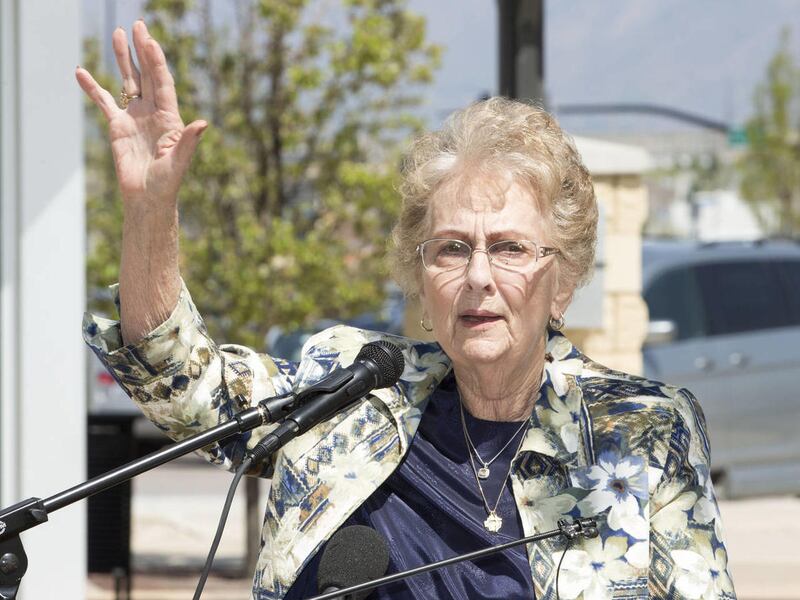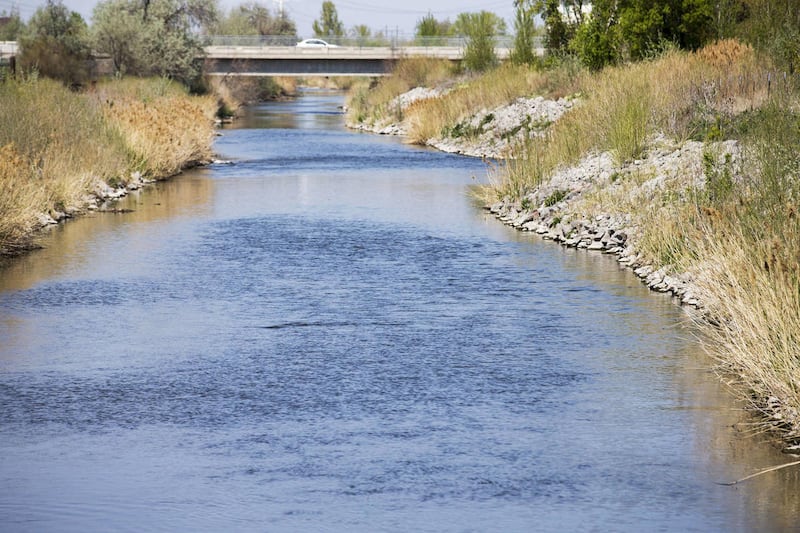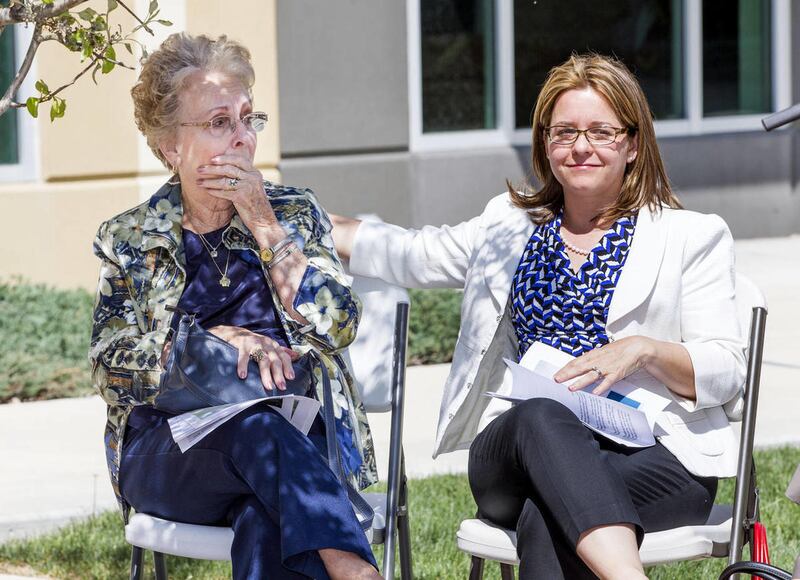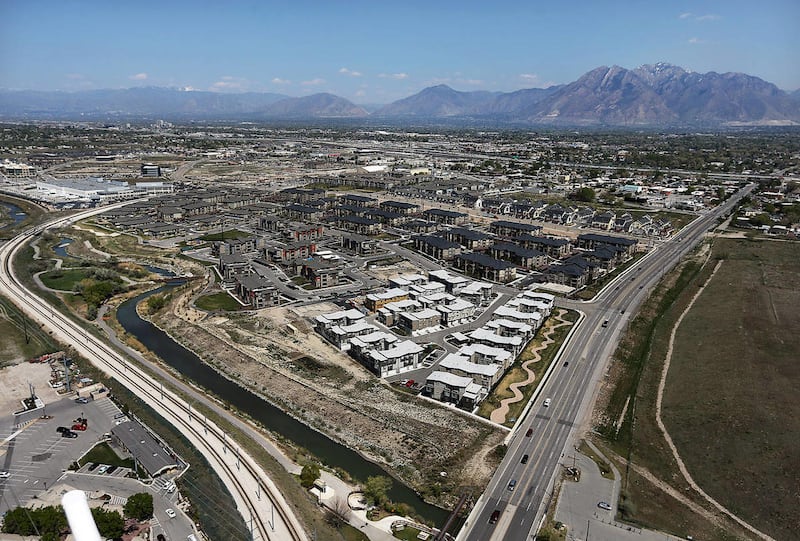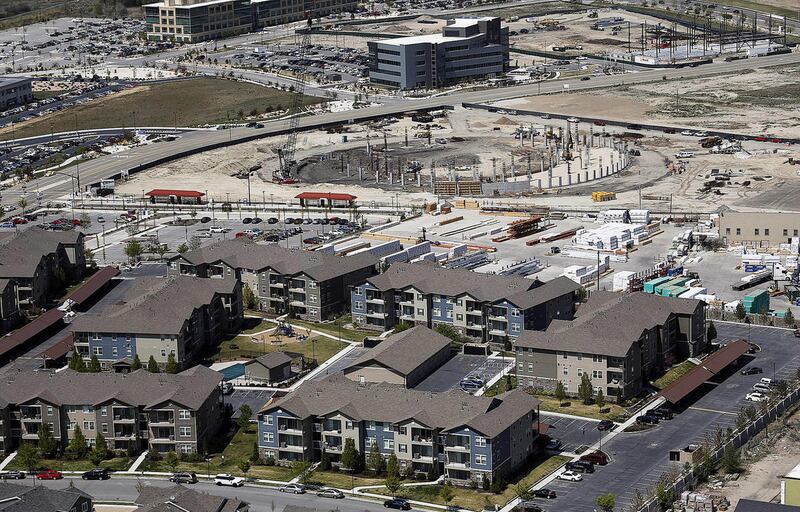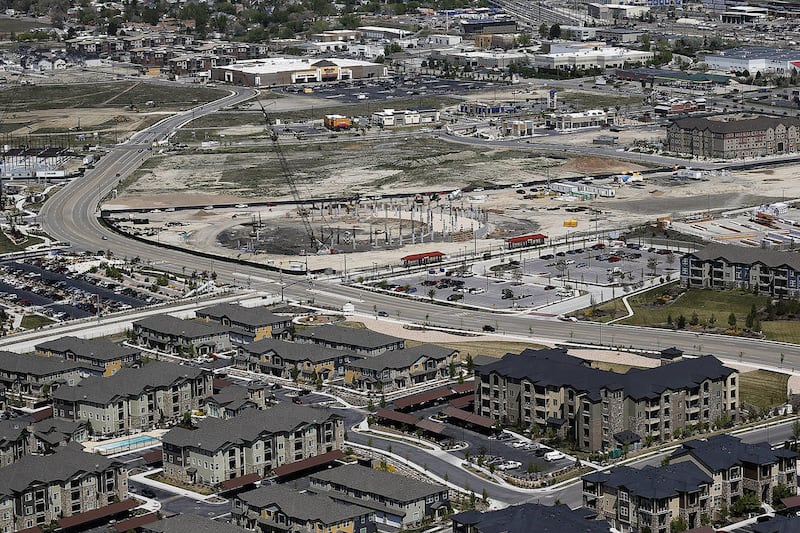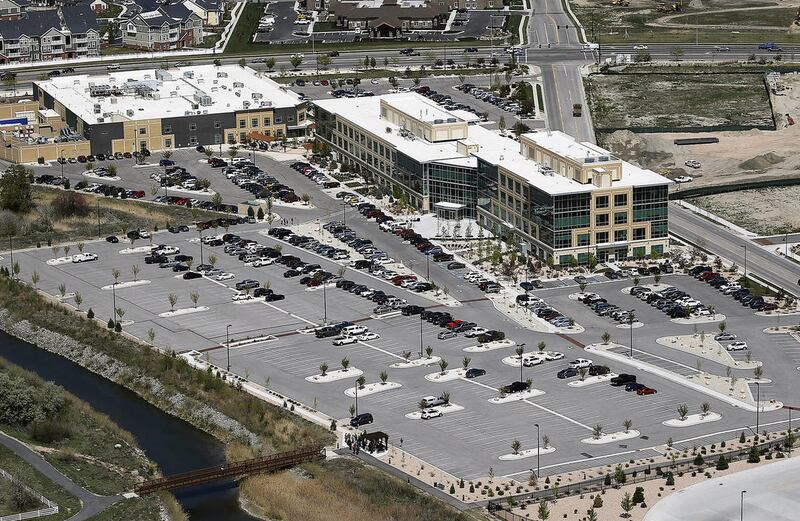MIDVALE — Once rife with contaminants like lead and arsenic and plagued by a toxic reputation that derailed neighboring home sales, a sprawling 446-acre site now supports a $300 million tax base and is being heralded as a national model for cleanup and site redevelopment.
The Midvale slag site, first named to the U.S. Environmental Protection Agency's Superfund list in 1991, was removed from the list earlier this month — a milestone celebrated in a ceremony Monday featuring a tour of the mixed-use development that occupies the land.
"This is a day of miracles," Midvale Mayor JoAnn Seghini said.
Seghini recalled a time in 1986 when the area was dominated by contamination and the time clock of "to-do's" put completion of the cleanup 80 years into the future.
Instead, just three decades later, the site is teeming with robust economic activity, jumping from an appraised value of $2,500 to more than $200 million.
"Midvale is an example of what a Superfund site can achieve and a national example of what a community can achieve," said Shaun McGrath, the regional administrator for the EPA that covers Utah and several other Western states.
Now called Bingham Junction, the land once sported a smelter that operated from 1871 to 1958 and an ore processing mill that left behind 14 million cubic yards of contaminated tailings. More than 2,000 jobs are now part of the thriving commercial development that has earned the city the Environmental Achievement Award for Excellence in Site Reuse.
The cleanup was massive.
In 1984, studies revealed that groundwater and soils were contaminated with heavy metals that were a legacy from processing the ore that came out of Bingham Canyon.
Ultimately, the tailings at the adjacent Sharon Steel site were capped and extensive remediation was carried out throughout the entire site, the heavy metals buried and held in place under layers of protective soils to prevent disturbance.
By 1999, the site became a Superfund redevelopment initiative as part of a pilot project for the EPA in the Western U.S. and was featured as a case study for the agency in 2011 and 2012 as an example for reuse of contaminated lands.
Fran Costanzi, who was the EPA's initial Superfund project manager for the site, said the contrast today is startling: Large mounds of slag and dilapidated buildings are just a memory, and shiny new buildings are sprouting in their place.
"It's fabulous," Costanzi said.
Dave Allison serves as the Utah Department of Environmental Quality's community involvement coordinator, acting as a liaison between the community and the government as cleanup has progressed throughout the years.
Midvale's slag site is unique in that it was so large and located in the middle of a metropolitan area experiencing rampant growth, he said.
"The site was going to be cleaned up, but it was the vision the partners had to develop this area that is remarkable," Allison said. "To see it and then see what it has become, it's incredible. It is just what is supposed to happen."
Email: amyjoi@deseretnews.com, Twitter: amyjoi16

